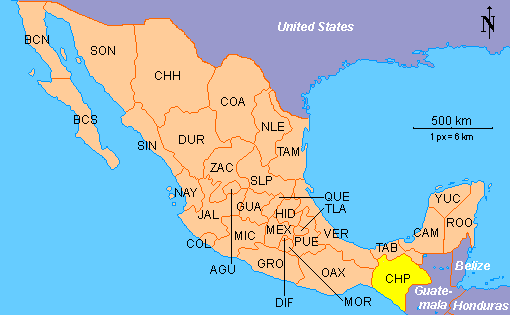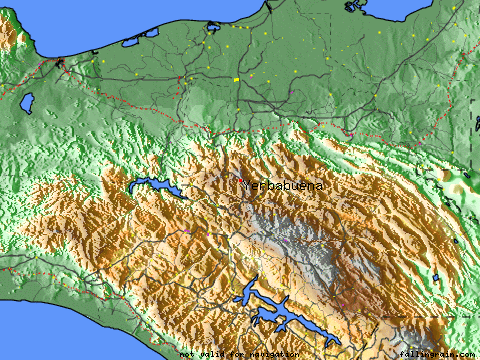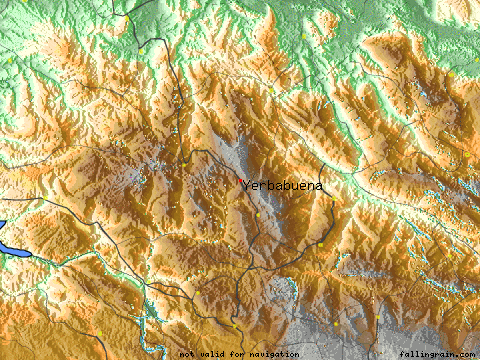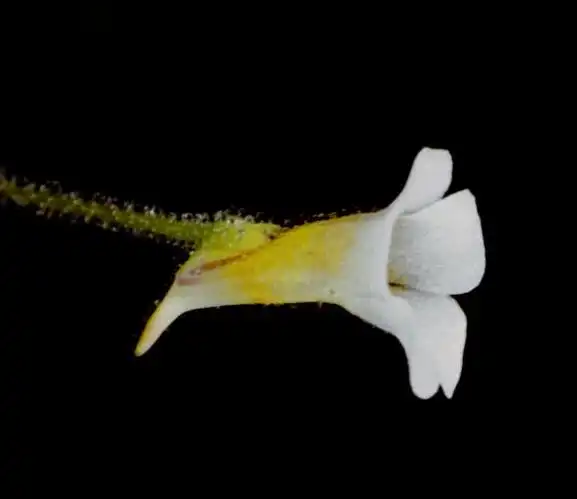Pinguicula sharpii
TaxonomyPermalink
- Family: Lentibulariaceae
- Genus: Pinguicula
- Name: Pinguicula sharpii
- Sub-classification (Casper): link
- Publication: By S.J. Casper, Katsuhiko Kondo,
- “A new species of Pinguicula from Mexico (Lentibulariaceae) “ in Brittonia, Vol. 29, Issue 1 (Jan. – Mar., 1977), 112 – 115.
DescriptionPermalink
Annua-biennis. Rhizoma simplex breve radicibus adventitiis filiformibus numerosis. Folia 4 – 8 radicalia rosulata circuitu +/- late obovata 14.0 – 18.5 mm longa, 11.0 – 17.0 mm lata basin versus cuneatim angustata apice rotundata integerrima margine paulum involuta superne glanduloso-viscosa glandulis sessilibus dense et glandulis stipitatis modice dense vestita laete virentia. Hibernacula nulla. Pedicelli1 – 5 luteo-virides erecti uniflori 13.4 – 39.5 mm alti filiformes glandulis stipitatis modice dense obsiti. Flores parvi 3.0 – 9.0 mm longi (calcari incluso). Calyx viridis bilabiatus extus glandulis stipitatis dense obsitus; labium superum usque ad basein fere trilobum lobis oblongis obtusis vel acutiusculis; labium inferum usque ad 1/3 – ½ longitudinis bilobum lobis oblongisacutiusculis. Corolla subisoloba lobis albitis fauce fulva extus glandulis stipitatis singularibus obtecta lobis rectangulo-oblongis apice leviter truncatis vel subrotundatis paulum longioribus quam latis 0.4 – 4.0 mm longis, 1.5 – 4.0 mm latis. Tubus subcylindricus 2.6 – 5.0 mm longus 2.5 – 4.0 mm latus luteus violaceo-striatus cum palato et cymatio palati basialbidus intus disperse pilosus in regione palati pilis longis clavate capitatis in regione cymatii palati pilis longis crassioribus retro conversis fulvis. Palatum fulvum hemisphaericum +/- 0.8 – 1.2 mm diametro pilis tenuibus mediocribus dense obtectum. Calcar luteum breve ex basi lato cylindricum apice rotundatum vel acutiusculum cum tubo angulum obtusum subvalidum formans 0.5 – 2.6 mm longum quintam totius corollae longitudinis partem subaequans. Stamina 0.8 – 1.0 mm longa; atherae 0.4 – 0.6 mm longae; pollen 5 – 6 colporatum. Ovarium subglobosum 0.3 – 0.6 mm diametro glandulis stipitatis modice dense obsitum. Stgma bilabiatum, labium inferum papillatum 0.2 – 1.0 mm longum. Capsula viridis subglobosa 1.9 – 3.8 mm diametro calycem non superans. Semina scobiformia numerosa.
Chromosomata 2 n = 16
Origin and HistoryPermalink
This species was found and collected in the winter 1972, in Chiapas Mexico, by the Dr. A.J. Sharp from the university of Tenessee, Knoxville.
Althought Pinguicula sharpii is similar to P. lilacina, its morphological characters are quantitatively smaller than those of P. lilacina.
Location / MapPermalink
Type : From Mexico, Chiapas : on a moist and shaded bank along a road at Yerba Buena near Pueblo Nuevo
|
Yerba Buena, Chiapas, Mexico
Latitude
17.1777778
Longitude
-92.9055556
Altitude (feet)
5249 |
|||||
| Lat (DMS) | 17° 10' 40N | Long (DMS) | 92° 54' 20W | Altitude (meters) | 1599 |
Maps by www.calle.com



HabitatPermalink
As stated above, on a moist and shaded bank along a road at Yerba Buena near Pueblo Nuevo
Introduction to HorticulturePermalink
Dr. A.J.Sharp sent the collected plants to Mr. T. Kondo, the junior author’s father and well known grower of carnivorous plants. Mr. T. Kondo rapidly popagated this new tiny Pinguicula by sexual reproduction and dispesed its offsprings to many horticulturist and amateurs around the world.
There is no really doubts taht we are growng the heir of these first generation.
This is again a proof is necessary that propagated and sharing our plants are the only way to insure their long time being in culture.
Growth and PropagationPermalink
(North hemisphere, France near Paris, in a polycarbonate greenhouse - see the map
Life CyclePermalink
This species is annual or biennial and the seeds of the previous year reaches maturity in a few months.
MediaPermalink
Many media seems to work from calcareous soil to live Sphagnum moss. I get my best results in Sphagnum moss. This year, I am trying a mix of 50 % vermiculite, 30 % opening media (volcanic rock and aqualite), 10% organic media from garden center and 10% sand.
You may ask why I am not trying again Spagnum moss : only because I forgot this year to prepare it before sowing the seeds and with the hot days, this media can rot very fast.
PotPermalink
Various.
PropagationPermalink
Nothing in particular : just sow the seeds on a wet media. The germination should occure within 4-5 weeks with high humidity. When the plants are aged of few more weeks, they can be grown in lower humidity. Remimber that this tiny species grow naturally on a moist and shaded bank so a shaded area is better than full sun !
PropagationPermalink
Very easy by seeds. Flowers (self pollinisation) are produced at the end of the growing season before the death of the plant. P. sharpii is an annual or biennial species.
PicturesPermalink
Pinguicula sharpii grown from an escaped seed. Photo : E. Partrat |
Pinguicula sharpii growing on pure live sphagnum moss. This is up to now my best success. Photo : E. Partrat |
|
The delicate flower of Pinguicula sharpii. Photo : S.Lavayssiere |
Pinguicula sharpii growing on classical carnivorous media mix : peat. Photo : S.Lavayssiere |
.webp)
.webp)

